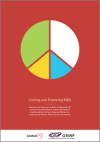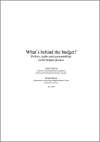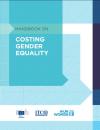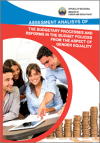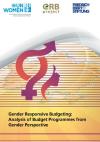НАЙДЕННЫЙ 110
Examining the resources needed to implement Security Council Resolution 1325 at national level as well as the gains, gaps and glitches of financing the women peace and security agenda. Over the last decade the policy environment on women, peace and security has gained significant momentum.
Paper discussing the definition and measurement of Sustainable Development Goal (SDG) Indicator 5.c.1. (reclassified to Tier II) and comparing Indicator 5.c.1 with other SDG fiscal indicators.
Using country-level data, the paper estimates the costs of interventions aimed at promoting gender equality and women's empowerment in Bangladesh, Cambodia, Ghana, Tanzania, and Uganda. It then uses these estimates to calculate the costs of such interventions in other low-income countries.
The Handbook is a comprehensive, step-by-step guide to costing gender equality priorities.
This paper by the Commonwealth Secretariat (1999) provides a rationale for the strategic goals of the Commonwealth Gender Budget Initiative at the national level and highlights the need for integrating a gender perspective in macroeconomic policies and budgets.
This paper attempts to briefly examine the level of readiness/preparedness of Pacific Island countries (PICs) to advance the process of incorporating gender-responsive budget initiatives into national policies and public expenditure management systems.
The main goal of the Albanian Time Use Survey is to develop nationally representative estimates of how people divide their time of various life activities. The main objectives to be achieved through the time use survey were:
The subject of this analysis is the budget process in the Republic of Macedonia (RM), with emphasis on the reforms of budget policies in terms of gender equality and determining entrance points for integration of the gender into the budgeting process.
The purpose of this manual is to provide public officials working on gender budget analysis a simple tool on how to carry it out.
